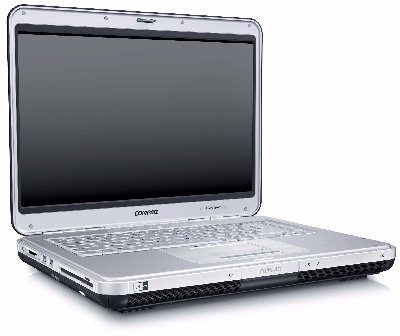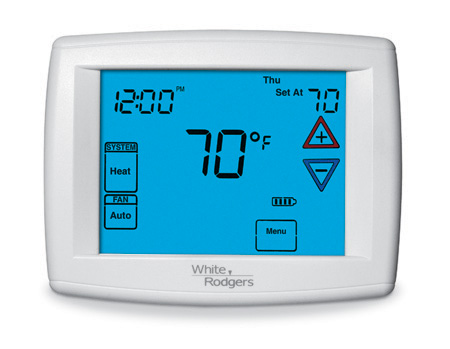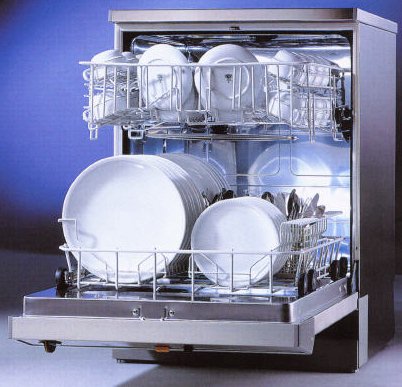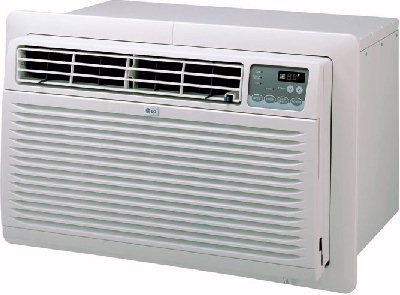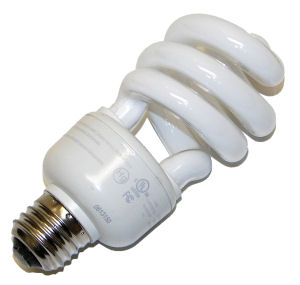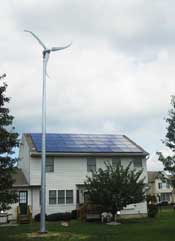|
|
|||||||||||||||||||||||||||||||
|
Home Energy Saving Tips
Try these easy, low-cost or no-cost energy saving tips to help you save energy and save money. Computer Turn your computer off when you aren't using it for long periods. Your computer uses 90 watts/second and your monitor uses another 60 to 90 watts/second. If you are using a laptop it is 70 watts/second. Contrary to urban myth, your computer does not use any extra energy when it is turned on. Since 1992 all computers sold in North America must meet ENERGY STAR standards for electrical usage. Furnace Keep your furnace clean, lubricated and properly adjusted with annual maintenance. If your furnace is working at peak efficiency it will use less energy and cost less to operate. Clean or replace the filter every 1-2 months - a dirty filter reduces the airflow and forces the furnace to run longer to heat your home. Consider purchasing a new ENERGY STAR qualified furnace with a variable speed motor. An average home in Canada can save up to $627 in natural gas and electrical costs annually when upgrading from a standard 60% efficiency natural gas furnace to a 95% efficiency furnace with a high efficiency variable speed motor. If you have forced air heating in your home, give your furnace a break by having ducts cleaned regularly and checked for leaks. Leaky air ducts can cause distribution losses of up to 30 per cent.
Thermostat Lower your thermostat by 4 - 5 degrees Celsius (7 - 9 degrees Fahrenheit) and turn it off completely while you're sleeping at night and when no one is at home. If you have old water pipes that tend to freeze, you may want to keep it on at night but at a lower setting. You will save between 2 to 5% on your heating bill for every 1 degree C you turn down your thermostat. Turning it down 5 degrees C will save you between 10% and 25%. Install an ENERGY STAR programmable thermostat. With an ENERGY STAR programmable thermostat to consistently lower your heat when you don't need it, you could save up to $200 a year. Wood Fireplace Close the damper to prevent warm air from escaping through the chimney, and ensure the damper fits properly. Aim to burn to 2 or 3 medium size logs at a time. Burn too much wood and most of the heat will be wasted by going up the chimney, which is dangerous because too much heat can cause a chimney fire. Wood is the cheapest way to heat your home (about half the cost of natural gas even with an efficient furnace), but it is also the dirtiest. Woodsmoke will leave stains on your walls and you will have to be cautious not to cause oversmoking or a chimney fire. It also takes a fair bit of work to chop wood down into kindling and sizes that will more easily fit in the stove (chopping wood is good exercise / stress therapy for your anxiety-ridden teenagers). Laundry Switch to cold when doing your laundry. 85 – 90% of the energy used to wash your clothes is used to heat the water, which is not a necessity for most clothes. Wash full loads. Choose a front loading washing machine. Not only does a front loading washing machine save water, it saves energy as well. It uses about 50% less water and about 50% less energy.
Dishwasher Always wash a full load in your dishwasher and air-dry your dishes on the "energy saver" setting. Windows, doorframes, sills and joints Apply a sealant or caulk around windows, doorframes, sills and joints. On a windy day feel for leaks or use a couple of incense sticks to help identify leaks around windows, electrical outlets, vents and exterior doors. As well look for spider webs - if there is a web there is a draft. Don't forget any basement or garage windows. If it is cold or drafty in that part of the house it means there is likely a leak (or poor heat ventilation). Use plastic window covers to help prevent heat loss. Weather-stripping provides a barrier between the fixed and movable sections of doors and windows. Apply weather-stripping to operable windows, exterior doors, garage doors, and doors that lead to the attic. Don't forget any basement or garage windows. Keep return air grills and heating vents clear of furniture, rugs and drapes, so there is no interference with the flow of heat through your home. Drapes & Blinds On sunny days, open south facing drapes and let the sun in, a natural source of heat and light. Pipes, ducts, fans and vents Plug gaps around pipes, ducts, fans and vents that go through walls, ceilings and floors from heated to unheated spaces. Showerheads and faucets Install low-flow showerheads and faucets. Basement If you have an unfinished basement or crawlspace, check for leaks by looking for spider webs. If there is a web, there is a draft. A large amount of heat is also lost from an un-insulated basement. Add insulation to basement walls and ceilings. Garage If you heat your garage sometimes turn on the heat just prior to use and then off when it is warm enough, save by not heating it continuously. Depending how much time you spend in your garage (and how often you heat it) you may want to insulate your garage as well and apply caulking to windows/etc.
Air Conditioners Proper maintenance of your air conditioner can increase its efficiency by about five per cent. Set your air conditioner on a lower setting. You don't need to be freezing. You could save 20% to 50% more electricity by using a lower setting. Remember to check the SEER number (an energy efficiency rating) of an air conditioner before you make this important purchase. An energy efficient air conditioner may be more expensive but it will pay for itself in electricity savings during its lifetime. Get your air conditioner tuned up on a regular basis. You can clean the outside compressor yourself with a hose and remember to remove debris that impedes air flow. Reduce the time your air conditioner is on. Open windows at night and use fans to blow in cool air. During the day, close your windows and draw the curtains closed to keep out solar energy. Use fans to cool your room. You can cool the main floor of a house by using a fan to blow cool air up from the basement. Planting the right vegetation can lower your energy consumption. A tree or shrub that shades your central air conditioner can improve its efficiency by up to 10 per cent.
Other TipsTurn off lights, TVs and other appliances when they are not needed. Take short showers instead of baths. A five-minute shower uses about half as much water as a bath. If you enjoy 10 minute long or longer showers, take a bath instead. Replace incandescent bulbs with energy-efficient compact fluorescents, which are four times more efficient and last about eight times as long. You can also control the intensity of your bulbs with dimmer switches to save money. Optional: Install motion sensors on light switches. Make sure the motion sensors are energy efficient and use significantly less energy than the bulbs otherwise they are not worth it. Aerators on your sink faucets can reduce overall water use by about 10 per cent. When possible small appliances such as a microwave, slow cooker, electric kettle or toaster oven instead of the stove. Take clothes out of the dryer and fold them while they are still warm to prevent wrinkling; your iron uses a lot of energy. Consider planting a deciduous tree (such as a maple or oak) on the south side of your lawn to block the sun during the summer, and let in solar energy during the winter when it sheds its leaves.
Making ElectricityIf you purchase enough solar panels and windmills from Canadian Tire (or a similar store), battery charges, etc. you can either severely reduce your electricity bills or even take yourself off the grid entirely (which means you pay less land taxe). Place your solar panels on a steep angle (to prevent snow from building up on it) and use a compass to make certain it is facing south. Use a location where trees don't interfere with its source of light. Place your windmills at the highest points, or depending on the layout of your home in a location that acts like a windtunnel (you can check for windtunnels using a wind speedometer). If you want to reduce your electricity costs significantly you will need to spend approx. $3000 on solar panels, batteries, etc. If you want to remove yourself entirely it will cost about $5000 to $7000 to do so (prices circa 2007). Please note that if you make enough electricity from your solar/wind system that you could also heat your home with an electrical furnace (or faux fireplace), and thus eliminate your natural gas bill as well. Depending on how much you currently spend on electricity, natural gas and land taxes for being on the electricity grid you could recoup your investment in 5 to 10 years. Note: If you run a home business you can claim buying solar panels/etc. as a business expense on your income taxes. This is especially popular for farmers since most farmers operate their own business. Farmers are the #1 buyers of windmills and solar panels in Canada.
|
|
||||||||||||||||||||||||||||||
|
Website Design + SEO by designSEO.ca ~ Owned + Edited by Suzanne MacNevin | |||||||||||||||||||||||||||||||
